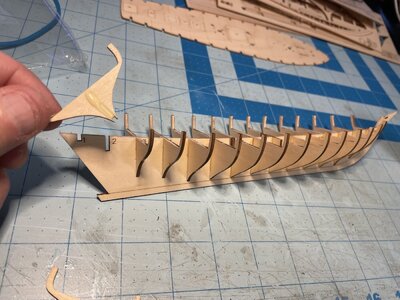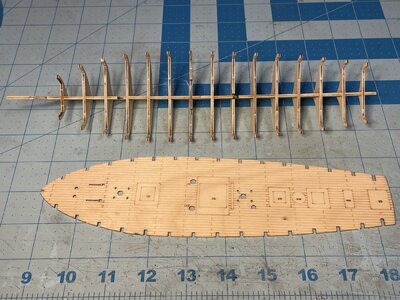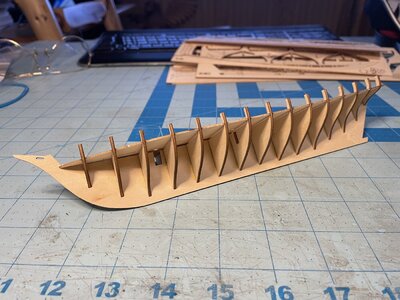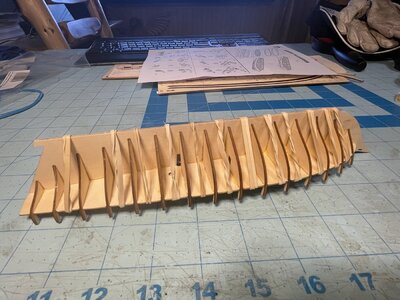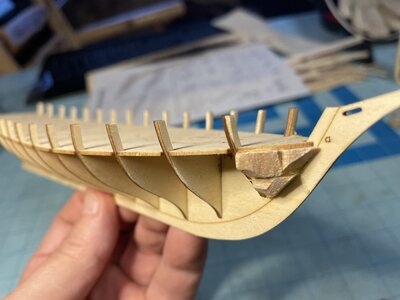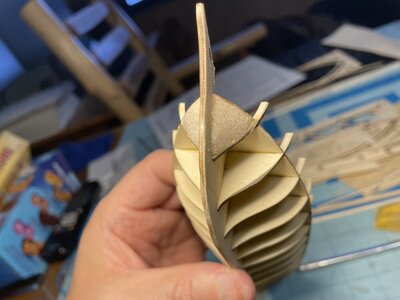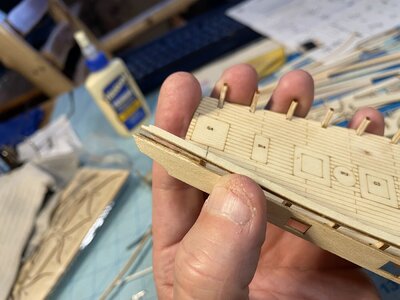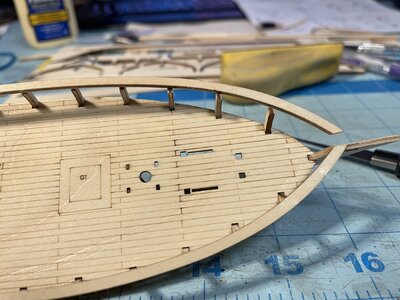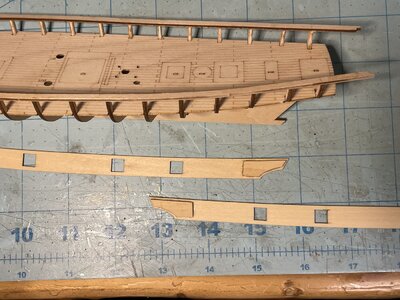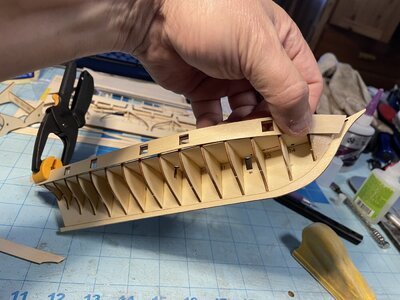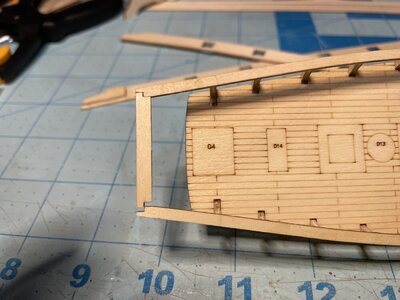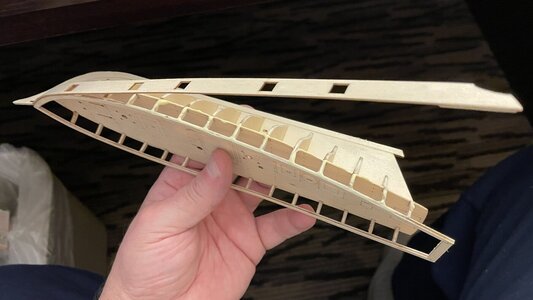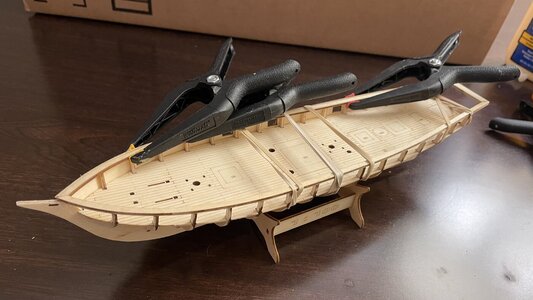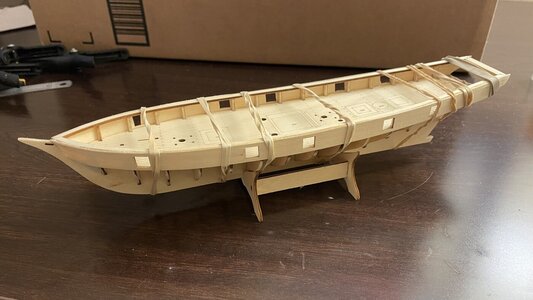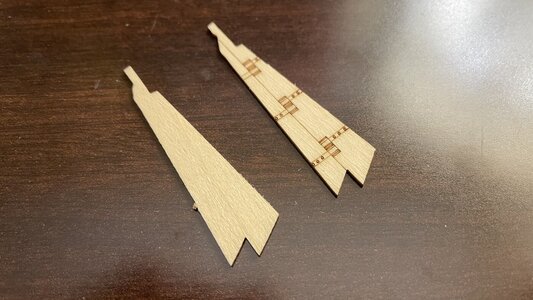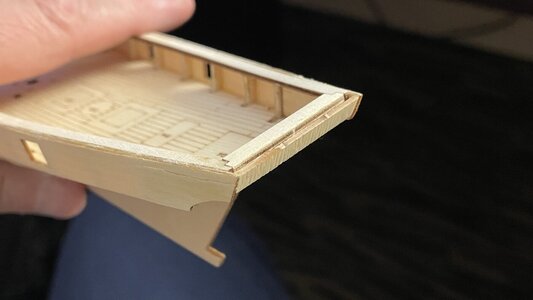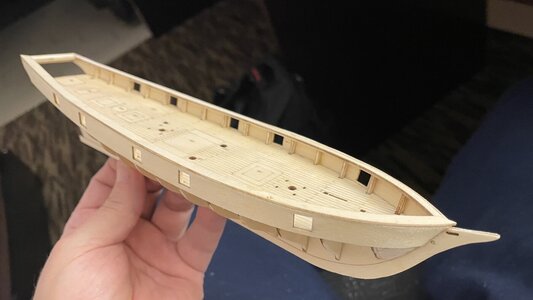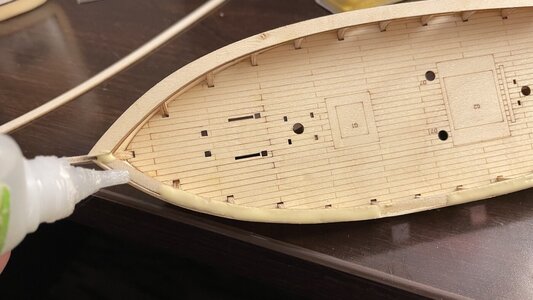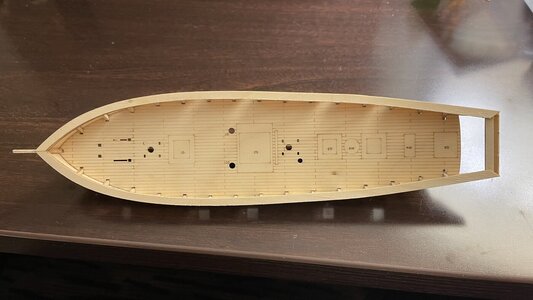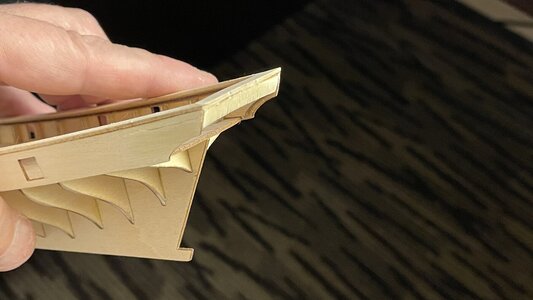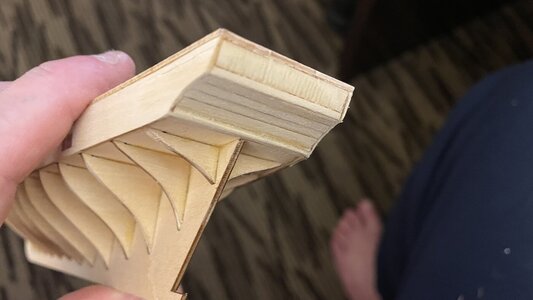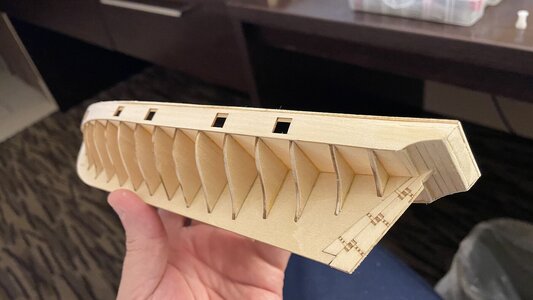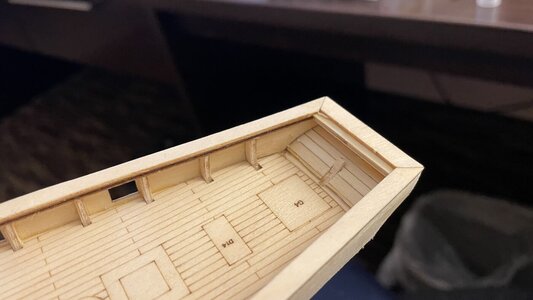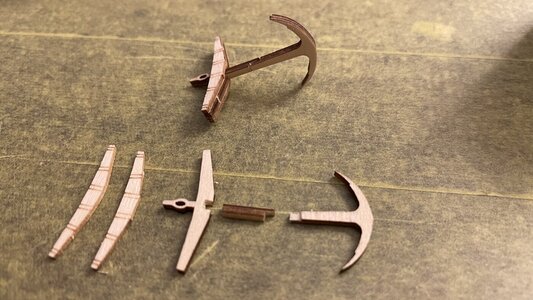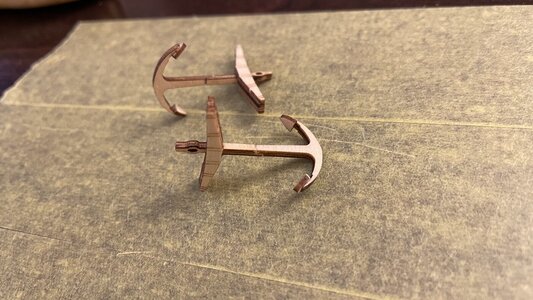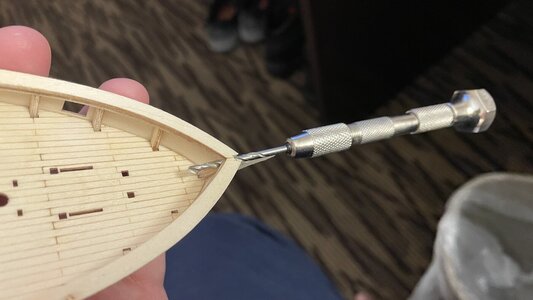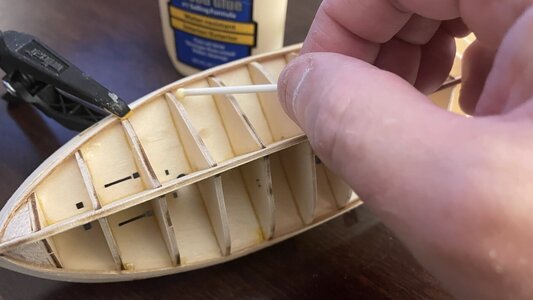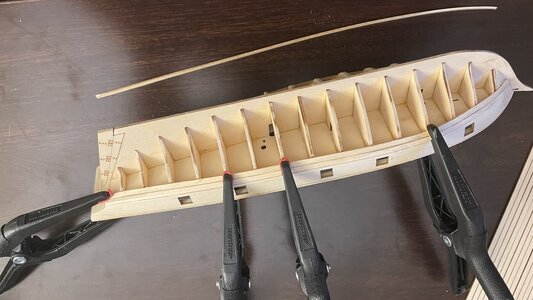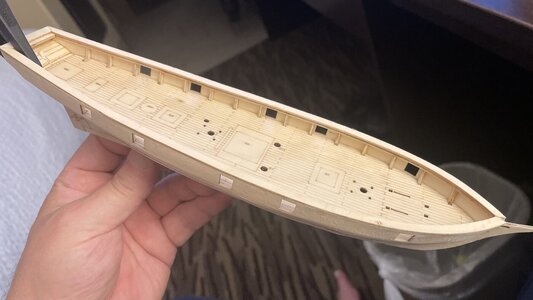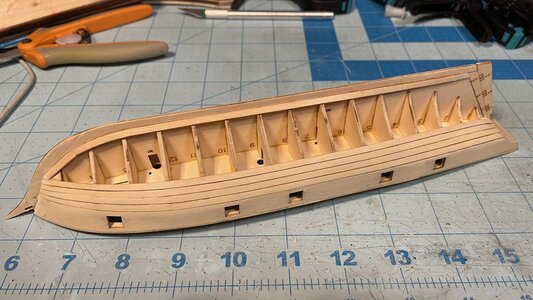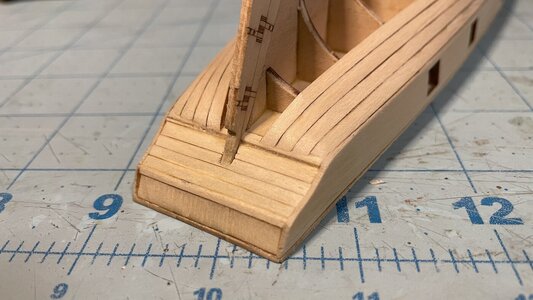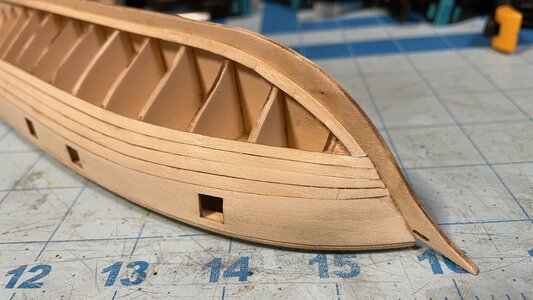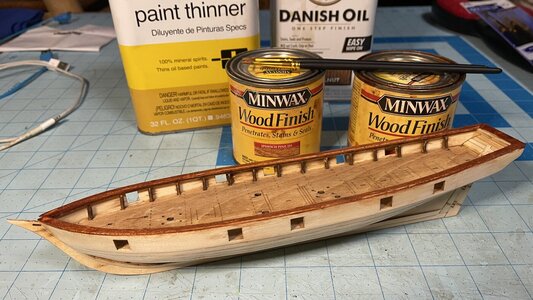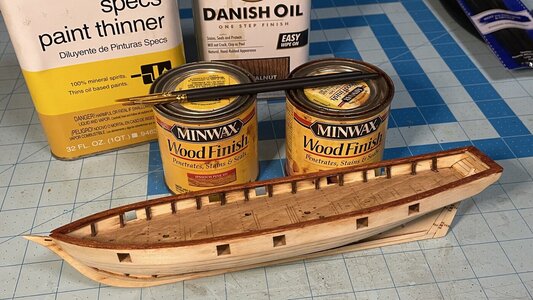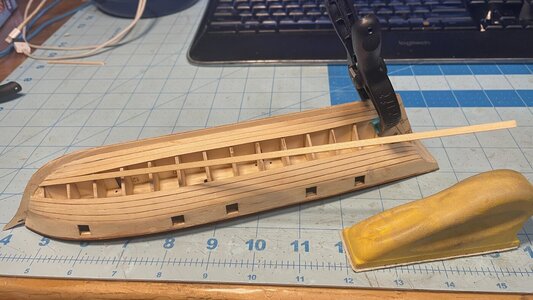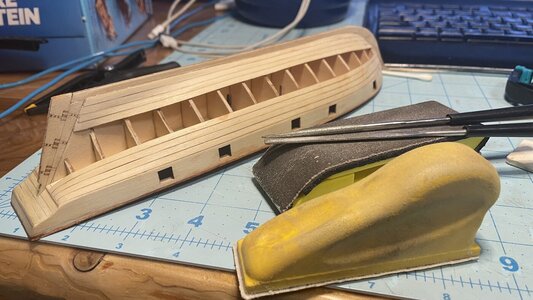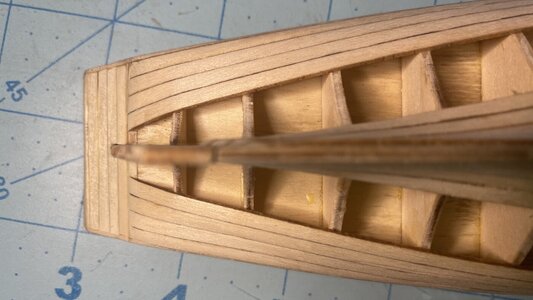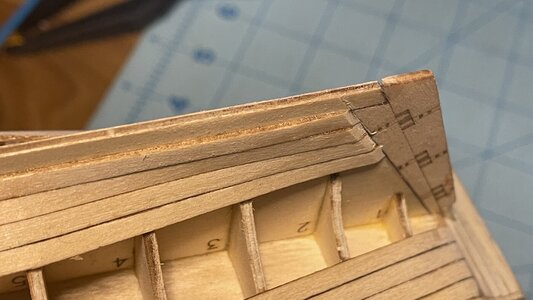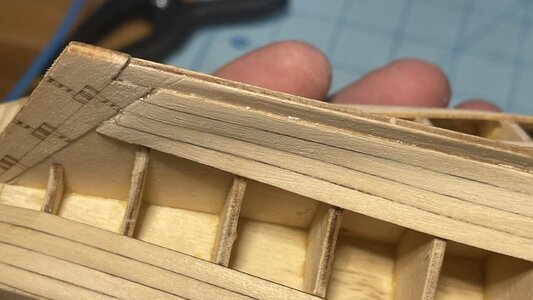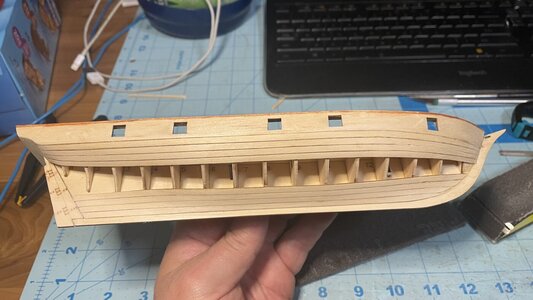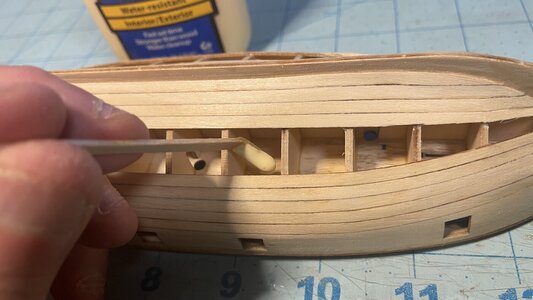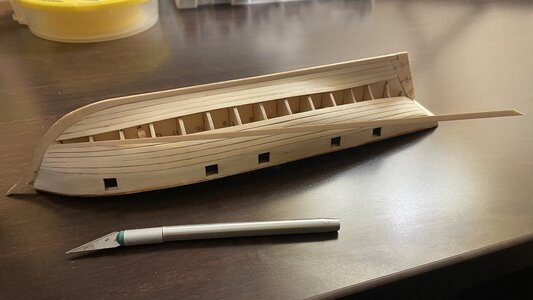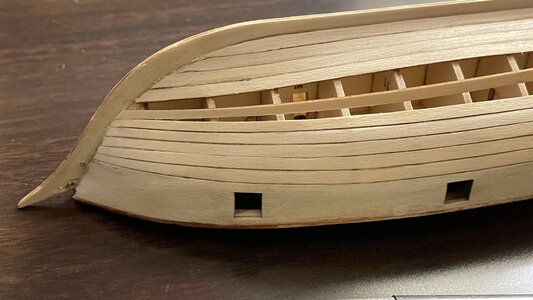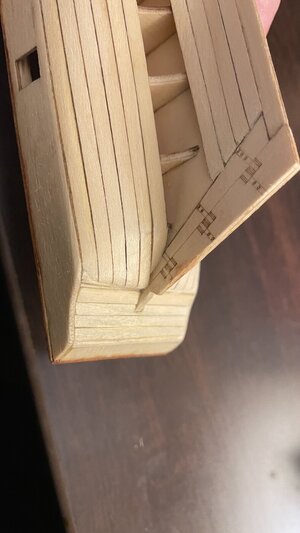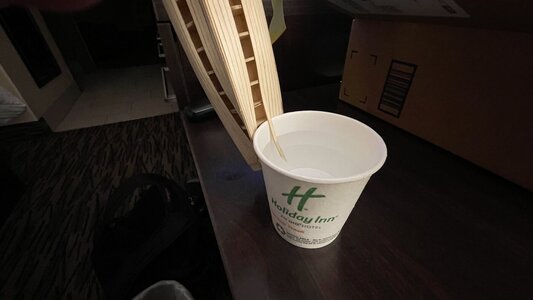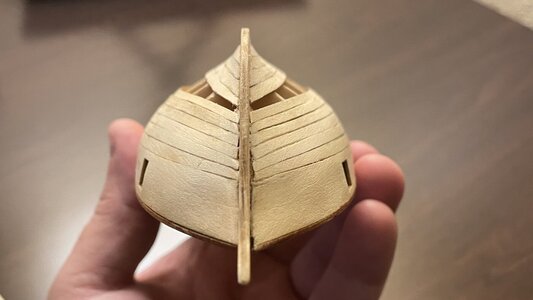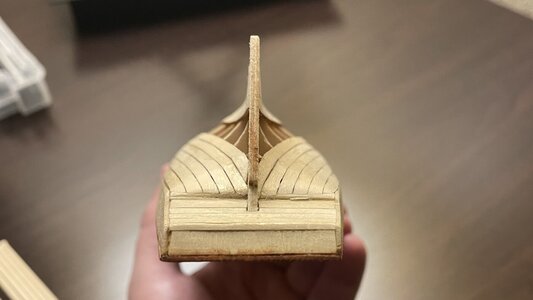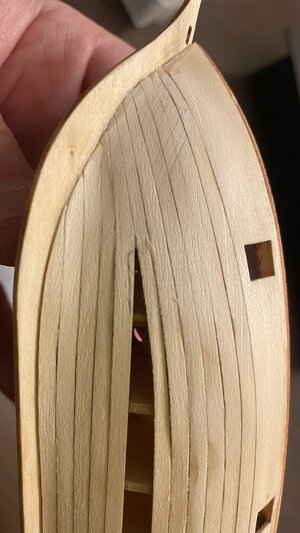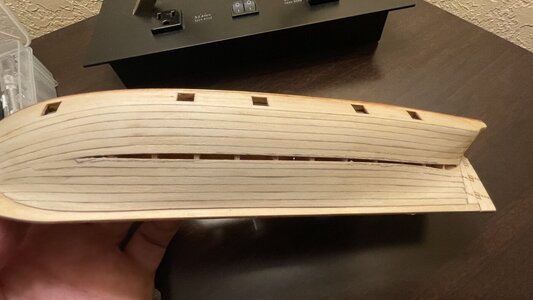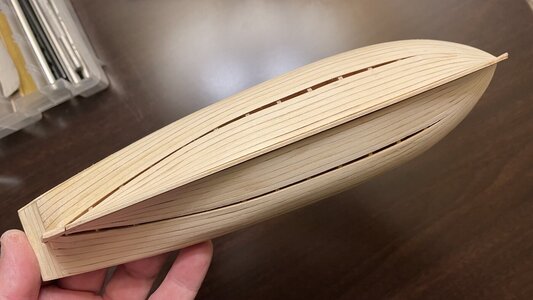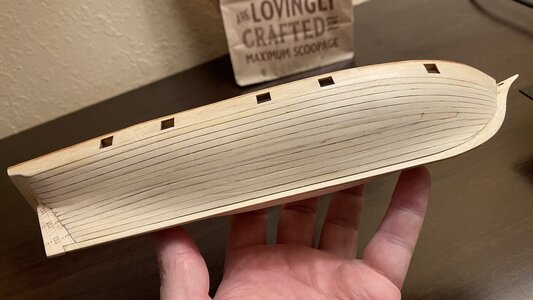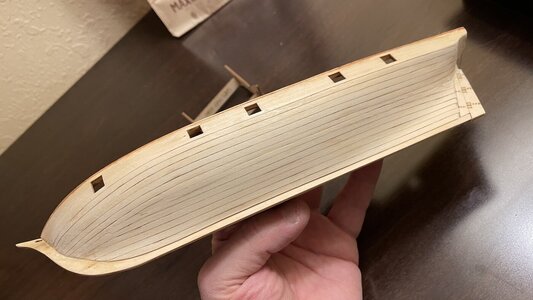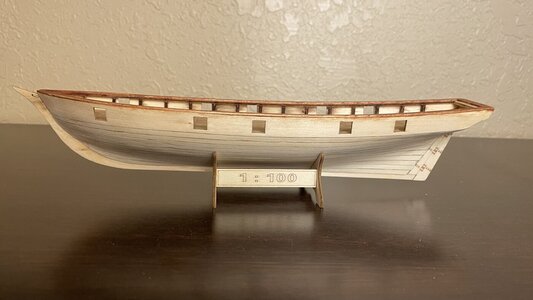Since a few of the members here are trying their hand at making a decent model out of the cheap Chinese Halcon or Harvey Baltimore sloops, and since I had a Halcon kit sitting around for a year of so, I started a speed build of it with bashing limited to deadeye, cannon, and blocks replacements and proper rigging. The reason for taking time away from HMS Sovereign of the Seas is because my job has changed and I have to drive to a neighboring State each week to work, and I needed a sanity project at the hotel since I'm cut off from my home computer, work space, and all my tools. Let's see how long this little boat takes...
So, here we go.
Day 1
Here is what you get for $12.00 US. Thin laser cut plywood parts, some rough sail cloth, a spool of black thread, and some dowels.
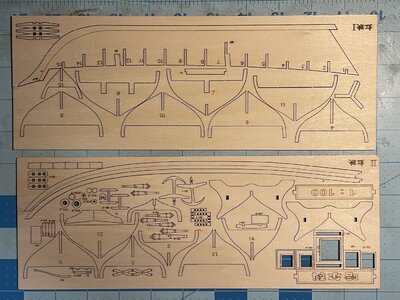
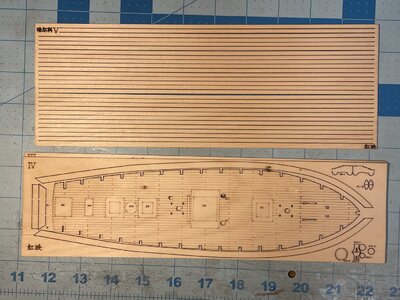
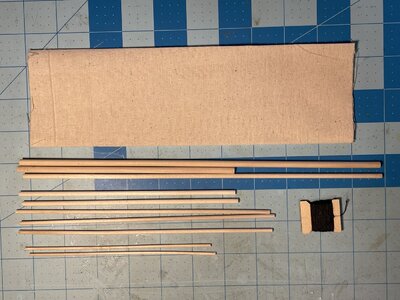
One sheet on instructions, printed on both sides. Yeah... these REALLY suck. The alignment of some parts is not possible to determine from the pictures in many cases. The writing in Chinese doesn't offer any help. I love how the instructions tell you to install the cannon carriages BACKWARDS.

 Makes me giggle like an idiot. The anchor stocks are not in the correct orientation also.
Makes me giggle like an idiot. The anchor stocks are not in the correct orientation also.
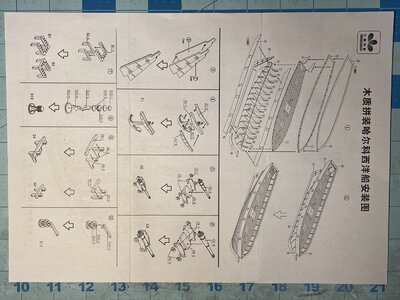
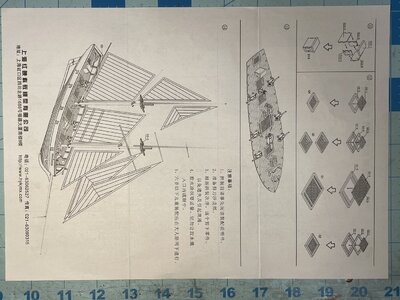
The parts had very minimal wood attachments to the rest of the sheet, making them very easy to remove.
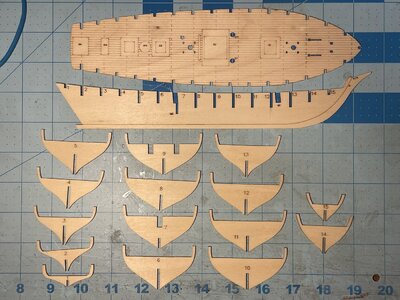
I am surprised to say that fitment of the parts is truly excellent! No shimming required for the assembly and the frames form a nearly perfect hull shape. Not what you expect from a mass produced kit at all. The laser cuts are VERY precise and neat. I used a cotton swab to wipe out the excess glue form the corner joints to keep things neat.
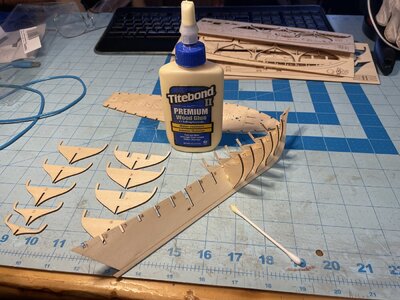
So, here we go.
Day 1
Here is what you get for $12.00 US. Thin laser cut plywood parts, some rough sail cloth, a spool of black thread, and some dowels.



One sheet on instructions, printed on both sides. Yeah... these REALLY suck. The alignment of some parts is not possible to determine from the pictures in many cases. The writing in Chinese doesn't offer any help. I love how the instructions tell you to install the cannon carriages BACKWARDS.


 Makes me giggle like an idiot. The anchor stocks are not in the correct orientation also.
Makes me giggle like an idiot. The anchor stocks are not in the correct orientation also.

The parts had very minimal wood attachments to the rest of the sheet, making them very easy to remove.

I am surprised to say that fitment of the parts is truly excellent! No shimming required for the assembly and the frames form a nearly perfect hull shape. Not what you expect from a mass produced kit at all. The laser cuts are VERY precise and neat. I used a cotton swab to wipe out the excess glue form the corner joints to keep things neat.



